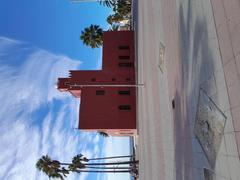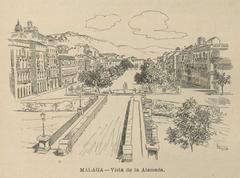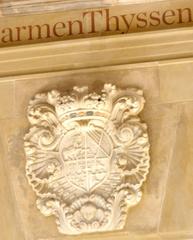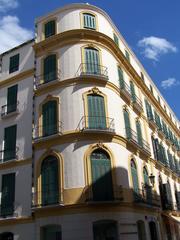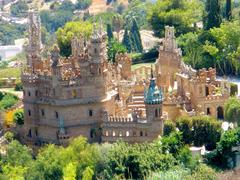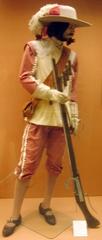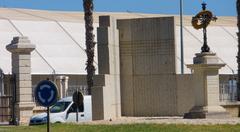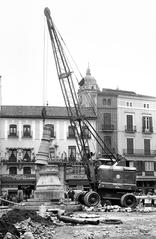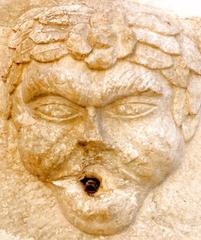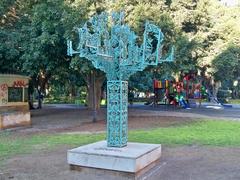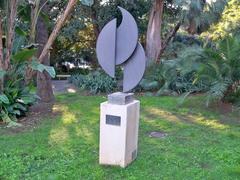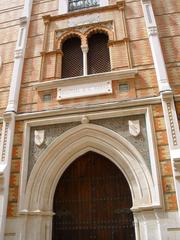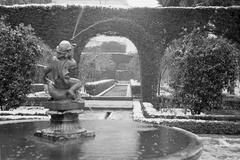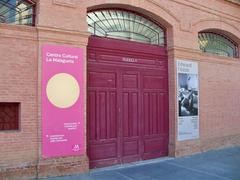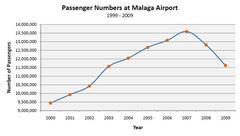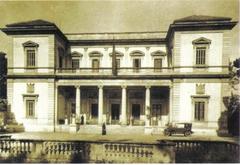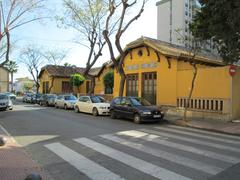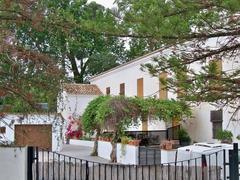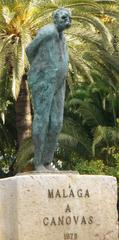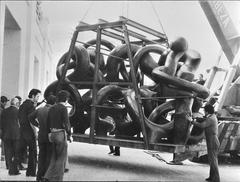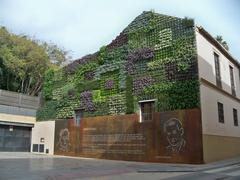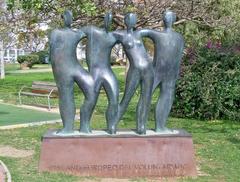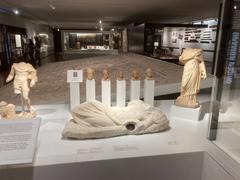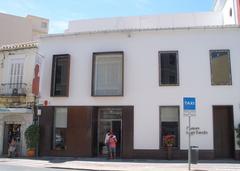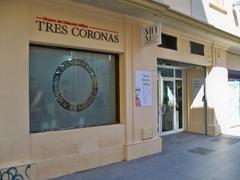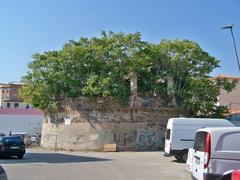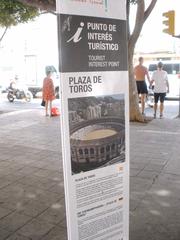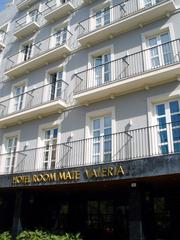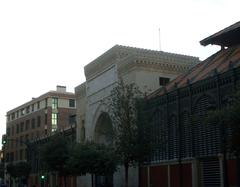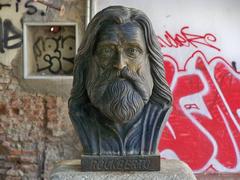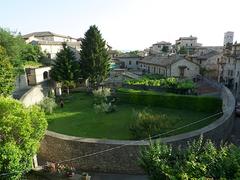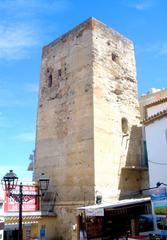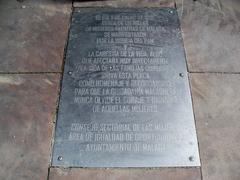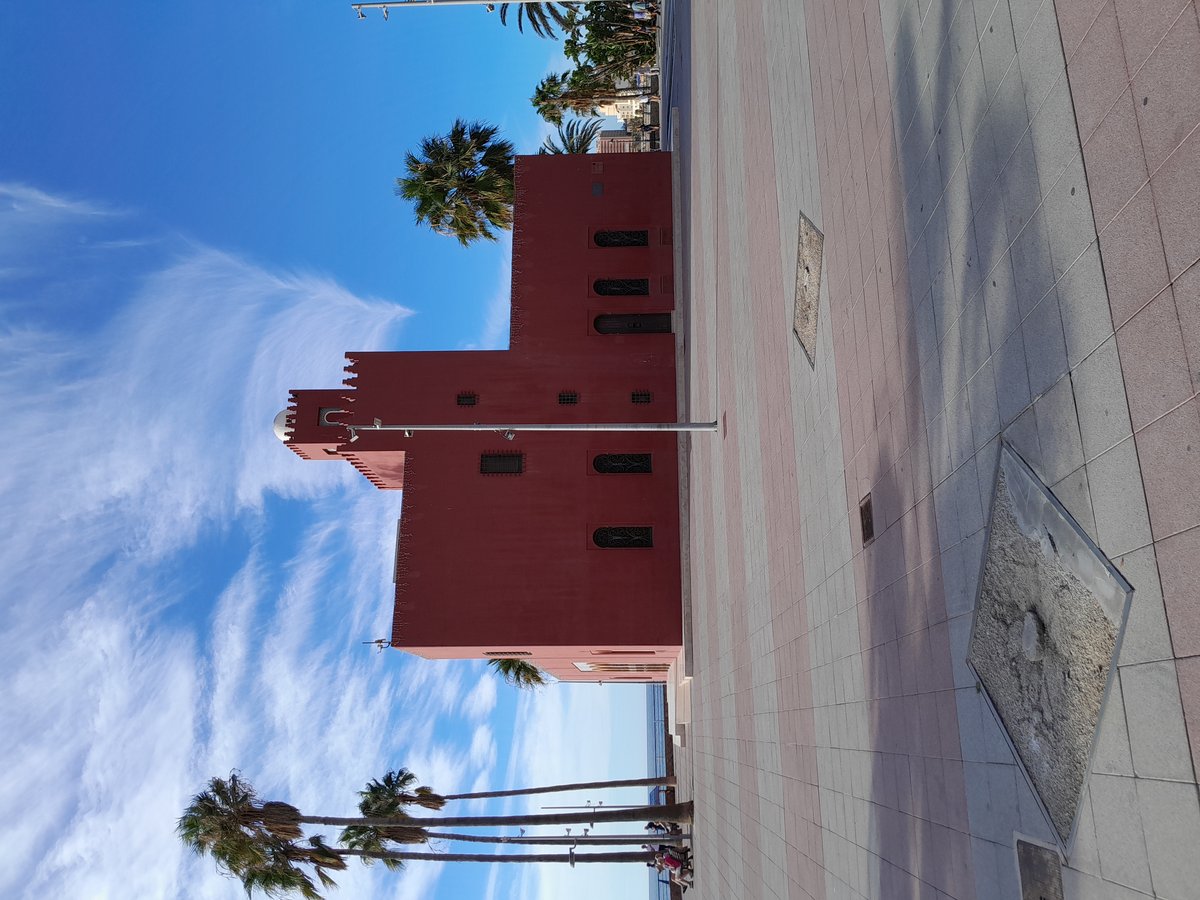
Visiting Hours, Tickets, and Travel Tips for Castillo Bil-Bil, Málaga
Publication Date: 19/07/2024
Introduction to Castillo Bil-Bil
Nestled along the picturesque Mediterranean coast in Benalmádena, Málaga, Spain, Castillo Bil-Bil is an architectural marvel that stands as a vibrant testament to the region’s rich cultural heritage. This iconic landmark, built in 1927, is a striking example of Neo-Mudéjar architecture, characterized by its use of traditional Islamic architectural elements such as intricate tile work, horseshoe arches, and a red stucco façade. Originally constructed as a private residence for the García-Lomas family, the castle has undergone significant transformations over the years, eventually being acquired by the Benalmádena Town Council in 1980. Today, Castillo Bil-Bil serves as a public cultural center, hosting a variety of events including art exhibitions, concerts, and workshops, making it a symbol of Benalmádena’s cultural and historical significance. This comprehensive guide aims to provide you with all the essential information you need to plan your visit to Castillo Bil-Bil, from its fascinating history and architectural splendor to practical visitor tips and nearby attractions (source, source, source, source).
Table of Contents
- Introduction
- Origins and Construction
- Early Use and Ownership
- Transition to Public Ownership
- Cultural Significance
- Architectural Features
- Restoration Efforts
- Current Use and Events
- Visitor Information
- Travel Tips and Nearby Attractions
- Frequently Asked Questions (FAQ)
- Conclusion
Castillo Bil-Bil - Visiting Hours, Tickets, and History of Benalmádena’s Iconic Landmark
Origins and Construction
Castillo Bil-Bil, located in Benalmádena, Málaga, Spain, is a striking example of Neo-Mudéjar architecture, a style that emerged in the late 19th and early 20th centuries. The castle was constructed in 1927 by architect Enrique Atencia, commissioned by the prominent García-Lomas family. The Neo-Mudéjar style, characterized by its use of traditional Islamic architectural elements, was chosen to reflect the rich cultural heritage of Andalusia. The castle’s red stucco façade, intricate tile work, and horseshoe arches are emblematic of this style (source).
Early Use and Ownership
Initially, Castillo Bil-Bil served as a private residence for the García-Lomas family. The family was known for their contributions to the local community and their interest in preserving Andalusian culture. The castle’s design included several luxurious features, such as ornate fountains, lush gardens, and a private chapel. These elements not only showcased the family’s wealth but also their appreciation for the region’s artistic traditions (source).
Transition to Public Ownership
In the mid-20th century, the García-Lomas family faced financial difficulties, leading to the sale of Castillo Bil-Bil. In 1980, the Benalmádena Town Council acquired the property with the intention of preserving it as a cultural landmark. The council recognized the castle’s architectural and historical significance and undertook extensive restoration efforts to maintain its original splendor. This transition marked the beginning of the castle’s new role as a public cultural center (source).
Cultural Significance
Castillo Bil-Bil has since become a symbol of Benalmádena’s cultural heritage. The castle hosts a variety of cultural events, including art exhibitions, concerts, and workshops. These events aim to promote local artists and provide a space for community engagement. The castle’s unique architecture and picturesque location along the Mediterranean coast make it a popular venue for weddings and other special occasions (source).
Architectural Features
The architectural design of Castillo Bil-Bil is a testament to the Neo-Mudéjar style’s revival of Islamic art and architecture. Key features include:
- Horseshoe Arches: These arches are a hallmark of Islamic architecture, commonly found in mosques and palaces throughout Andalusia. They are used extensively in the castle’s design, particularly in doorways and windows (source).
- Tile Work: The castle’s interior and exterior are adorned with intricate tile mosaics, known as azulejos. These tiles often feature geometric patterns and floral motifs, reflecting the influence of Islamic art (source).
- Stucco Façade: The red stucco exterior of the castle is another characteristic element of Neo-Mudéjar architecture. The use of stucco allows for detailed decorative work, including arabesques and calligraphy (source).
Restoration Efforts
The restoration of Castillo Bil-Bil has been a continuous process since its acquisition by the Benalmádena Town Council. Efforts have focused on preserving the castle’s original features while adapting it for modern use. Key restoration projects have included:
- Structural Repairs: Ensuring the stability of the castle’s foundations and walls has been a priority. This has involved reinforcing the structure and addressing any damage caused by weathering and age (source).
- Artistic Restoration: Restoring the intricate tile work and stucco decorations has required the expertise of skilled artisans. These efforts have aimed to maintain the authenticity of the castle’s design while repairing any damage (source).
- Modern Amenities: To accommodate its role as a cultural center, the castle has been equipped with modern amenities, including updated lighting, climate control, and accessibility features. These additions ensure that the castle can host a variety of events while preserving its historical integrity (source).
Current Use and Events
Today, Castillo Bil-Bil serves as a vibrant cultural hub for the Benalmádena community. The castle’s calendar is filled with events that cater to a wide range of interests, including:
- Art Exhibitions: The castle regularly hosts exhibitions featuring works by local and international artists. These exhibitions cover various mediums, including painting, sculpture, and photography (source).
- Concerts and Performances: The castle’s picturesque setting and excellent acoustics make it an ideal venue for concerts and performances. Events range from classical music recitals to contemporary dance shows (source).
- Workshops and Classes: Castillo Bil-Bil offers workshops and classes on topics such as art, history, and crafts. These educational programs aim to engage the community and promote cultural appreciation (source).
Visitor Information
For those planning to visit Castillo Bil-Bil, here are some essential tips:
- Visiting Hours: The castle is typically open to the public from 10:00 AM to 2:00 PM and from 5:00 PM to 8:00 PM. However, hours may vary depending on scheduled events (source).
- Tickets: Entry to the castle is usually free, although some special events may require a ticket purchase. It is advisable to check the castle’s official website for the latest information on events and fees (source).
- Guided Tours: Guided tours are available and provide valuable insights into the castle’s history and architecture. These tours are often conducted in multiple languages to accommodate international visitors (source).
Travel Tips and Nearby Attractions
- Accessibility: Castillo Bil-Bil is equipped with modern amenities to ensure accessibility for all visitors. Ramps and elevators are available to accommodate those with mobility issues (source).
- Nearby Attractions: While in Benalmádena, visitors can explore other historical sites such as the Benalmádena Stupa and the Colomares Castle. The Tivoli World amusement park and the Sea Life Benalmádena aquarium are also nearby, offering fun for families (source).
- Photography Spots: The castle’s picturesque location along the coast offers numerous spots for stunning photographs. Early morning and late afternoon are ideal times for capturing the castle’s beauty in natural light (source).
Frequently Asked Questions (FAQ)
- What are the visiting hours for Castillo Bil-Bil? The castle is typically open from 10:00 AM to 2:00 PM and from 5:00 PM to 8:00 PM, but hours may vary depending on scheduled events (source).
- How much are the tickets for Castillo Bil-Bil? Entry is usually free, but some events may require a ticket. Check the official website for the latest information (source).
Conclusion
By preserving its historical and architectural heritage while serving as a modern cultural center, Castillo Bil-Bil continues to be a cherished landmark in Benalmádena. Whether you’re an art enthusiast, a history buff, or simply looking for a beautiful venue to explore, Castillo Bil-Bil offers an unforgettable experience. Don’t forget to check out related posts and follow us on social media for more updates!
Call to Action
Discover the rich history and vibrant culture of Castillo Bil-Bil by visiting this iconic landmark in Benalmádena. Download our mobile app for more detailed guides, check out related posts on our website, and follow us on social media for the latest updates on events and activities. Don’t miss out on experiencing one of the most significant historical sites in Benalmádena!
References and Sources
- Castillo Bil-Bil - Visiting Hours, Tickets, and History of Benalmádena’s Iconic Landmark, 2024, Benalmádena.com (source)
- Castillo Bil-Bil - Visiting Hours, Tickets, and History of Benalmádena’s Iconic Landmark, 2024, Andalucia.com (source)
- Castillo Bil-Bil - Visiting Hours, Tickets, and History of Benalmádena’s Iconic Landmark, 2024, Benalmádena.es (source)
- Castillo Bil-Bil - Visiting Hours, Tickets, and History of Benalmádena’s Iconic Landmark, 2024, Spain.info (source)
